There were many terrible things about the global pandemic of 2020-2021 — sickness, death, fear, and loss of social interactions spring to mind — but even after finally returning to normal life there is one thing that was still bothering me. Back in March of 2020, we were traveling through Florida and just days away from beginning a 14-day stay at Anastasia State Park near St. Augustine. Then the state closed all the state parks, including the one we were staying at, and we were forced to cancel our upcoming reservations and seek shelter elsewhere.
Getting reservations at Anastasia is really difficult, since it is one of the most popular Florida state parks, and even my patented 34-step method required many days of effort to secure reservations back in 2019. The park offers an appealing combination: a natural setting near a pristine beach, located just minutes from a city with some of the richest history in Florida. You can imagine how bummed I was about cancelling those hard-won reservations in 2020. When I realized that I was still disappointed about this almost three years later, I decided to try to snag a spot from cancellations some time this winter.
Using Tim Watson’s fabulous bot, I set up an alert for any 4-night availability at Anastasia in the winter/spring months, but I wasn’t quite sure what to expect considering the popularity of the park. I was pleased to begin receiving about one notification per day of a cancellation meeting my criteria, but also not too surprised to discover that these vacant sites were typically snapped up within 5 minutes (literally) of becoming available. I knew that eventually my timing would work out, and one day in early January I received the notice about a suitable site while sitting at my desk and jumped immediately into making the reservation. Our site in the Sand Dollar loop turned out to be large, private, perfectly level, and a great spot for a long weekend getaway to St. Augustine.
St. Augustine is the oldest continuously occupied European-founded city in the U.S., founded by the Spanish in 1565. With over 450 years of history behind it, St. Augustine offers a lot to see and do, and we sampled a bit from several different eras.
Spanish Empire
The first hundred years of St. Augustine’s history feature a seemingly endless succession of skirmishes among European powers for control in various parts of the Americas, with Spanish, British, and French forces constantly attacking and burning down each other’s settlements. Spain finally decided to invest some resources in defending St. Augustine, and a masonry fortress was begun in 1672. Today the Castillo de San Marcos is operated by the National Park Service and is a strikingly old structure in a place (Florida) not known for having a long history. As usual, the NPS interpretive materials do a great job of explaining the long and complicated history of the fort. But not being particularly big into military history, and having visited the Castillo before, we made fairly quick work of the self-guided tour at the Castillo before exploring other areas of the historic downtown on a rainy afternoon.
British Rule and the Minorcans
Spanish control of St. Augustine first ended almost exactly 200 years after it began. The 1763 Treaty of Paris, which ended the Seven Years’ War, caused a major realignment of power in North America. The victorious British acquired control of Canada and the territory between the Mississippi River and the Appalachians from the French and also took over St. Augustine from the Spanish, while Britain returned conquered Havana to Spain. The people of St. Augustine were apparently not enthusiastic about the transfer of power, because they stampeded for the exits. Virtually the entire population of St. Augustine, together with the free Black community of nearby Fort Mose, moved to Cuba and the British took over what was essentially a 200-year-old ghost town. In an effort to establish a viable presence in the area, Great Britain offered generous land grants to individuals who would agree to outfit plantations and other enterprises in the region. Beginning in 1765 one Andrew Turnbull attempted to build a new colony at New Smyrna, about 60 miles south of St. Augustine, and given the total absence of local labor he recruited workers from around Mediterranean. Over 1,400 people from places like Minorca, Majorca, Corsica, Sicily, and Crete set sail for Florida, though terrible conditions at sea and on the plantation resulted in many deaths. Following a dispute over whether their contractual period of indentured service ended after 9 years, the surviving workers fled from New Smyrna in 1777 and sought refuge in St. Augustine, where they were happily accepted and resettled in still-vacant properties. This group went on to become a major influence on the culture of the city, and are known locally as “the Minorcans.”
The easiest way to dive into Minorcan culture is also one of our favorite: food! The people of the Mediterranean islands found a lot of familiar food items in Florida’s seas, and developed distinctive local dishes like a Minorcan seafood chowder with a tomato base. A key ingredient in local cuisine is the datil pepper (rhymes with “cattle”), a variety of Capsicum chinense pepper related to the habanero, which is grown almost exclusively in the St. Augustine area. We are fans of spicy food and local specialties, so we made sure to try some Minorcan cuisine. We stopped for lunch one day at the Sunset Grille, a local institution along A1A in St. Augustine Beach, where we feasted on Minorcan conch chowder, bang bang shrimp with datil pepper sauce, and beers from several local breweries.
We also took the opportunity on Saturday morning to stroll from the state park to the adjacent St. Augustine amphitheater, where we enjoyed browsing the impressive weekly farmers’ market. I was on the lookout for products containing datil peppers and I was not disappointed. Datil sauces, jellies, and rubs were easy to find, along with a very wide array of fruits and vegetables, meats, seafood, cheeses, flowers, soaps, crafts, and enticing prepared foods. It was one of the better farmers’ markets we’ve seen in Florida.
Era of Flagler
A century after the Minorcans arrived in St. Augustine, Florida was now part of the United States but St. Augustine was a sleepy, remote town where people mostly lived by hunting, fishing, and farming family plots. That changed when Henry Flagler, one of the founding partners of Standard Oil, visited Florida with his first wife in an effort to address her tuberculosis. He saw the potential of the area as a winter vacation destination, and set about building a second business empire. He bought up a number of small local railroads, improving the lines and combining them into the Florida East Coast Railway. He proceeded to build track all the way down the east coast to Key West, which at the time was a thriving port and the largest city in Florida, and would become even more important upon completion of the Panama Canal. The engineering challenges involved in building a railroad through the swampy wilderness of Florida and across miles of open water are a story for another time. Here in St. Augustine, like in Palm Beach and Miami, Flagler built a grand hotel unlike any existing in the world at the time. The Ponce de Leon opened in 1888 with 540 rooms, was one of the first hotels built entirely from poured concrete, and was built to be fully electrified from the outset with power coming from its own onsite power plant. Spanish style predominates, and the ornate decorations include a lavishly gilded dome in the lobby, detailed floor mosaics, and windows created by Louis Comfort Tiffany in the dining hall and other public areas. A season-long stay at this remarkable resort (January through April) cost $4,000, which is the equivalent of $140,000 in today’s dollars.
The hotel closed in the 1960s, and one of Flagler’s distant heirs spearheaded the effort to preserve the stunning building by turning it into a college. Today Flagler College is a well-regarded private liberal arts college, and happily for us they offer student-led architectural tours of the main public rooms of the former hotel. The hotel serves as the freshman dormitory, and students eat their meals in the unbelievably opulent dining room while school events regularly take place in the spacious and ornately decorated Ladies’ Lounge. The college also displays various Flagler-related artifacts along the tour route.
In addition to building the Ponce, Flagler left his mark throughout St. Augustine. The Ponce proved to be so popular that Flagler soon built a second hotel, the Alcazar, across the street to handle overflow. That building now serves as a city hall for St. Augustine as well as the home of the Lightner Museum. The booming tourism business prompted the construction of the Casa Monica, yet another grand Spanish-style hotel, within a block of the Ponce. Flagler supported the development of numerous civic and cultural sites in the city, including by funding the construction of the lovely Memorial Presbyterian Church a block north of the Ponce. Flagler was the son of a Presbyterian minister, and this church is both the first Presbyterian facility in Florida and the final resting place for Flagler’s daughter Jennie who died in childbirth in 1889, Flagler’s first wife Mary, and Flagler himself. And of course 450 years of history plus 150 years of tourism has spurred the development of countless monuments, museums, attractions, restaurants, and shops. It’s hard to travel a single block in this town without seeing one of those cast iron historical marker signs.
Touristy Stuff
Flagler helped change St. Augustine from a sleepy backwater with a mildly interesting old fort to a tourism powerhouse, and that legacy continues today. We are not at all interested in visiting Ripley’s Believe It or Not, haunted house attractions, or anything involving people dressed as pirates — all of which are available here in St. Augustine. But I do have a soft spot for some types of kitsch, and we definitely like nature and ecology, so we made sure to visit the Alligator Farm. Opened in 1893, this is Florida’s oldest theme park, but it has evolved from a small roadside attraction to a very respectable zoological park. Alligator Farm is home to every species of crocodilian found around the world, along with other reptiles like snakes, tortoises, and komodo dragons, as well as a variety of unusual birds. They do important work on captive breeding of several crocodilian species that are critically endangered in the wild, and it’s interesting to discover the diversity of these fascinating ancient creatures.
The Alligator Farm’s marshy rookery area is attractive to many local birds, and a boardwalk across the lagoon makes it easy to get close and observe these lovelies.
We also had the chance to witness people at work in jobs that are most definitely not for us:
Anastasia State Park
In addition to exploring St. Augustine, we also took several walks on the beach at the state park. While it’s not quite as deserted as the beach at our home state park — which is understandable given the much larger population here — the beach is wide, flat, and flanked by scenic white dunes. The upland areas of the park are densely vegetated, with plenty of Spanish moss dripping from the overhanging oaks. It was easy to see why this park is so highly sought after by campers.
This was our first short trip in the trailer since coming off the road. Back in 2018 we essentially transitioned directly from never having owned an RV to living in one full-time. When packing for this trip, we discovered that our rig offers stupendous amounts of storage when you’re not attempting to carry all your earthly belongings with you. In fact, it’s far larger than we would ever need if we decided not to do any long (multi-month) camping trips. I guess now I have a better understanding of those people we’ve seen in campgrounds sporting waffle makers, espresso machines, huge reclining patio chairs, and other large gadgets. If you’re a weekend camper with plenty of extra storage, why not?
The weather on our trip was wacky — 60 degrees and raining on Saturday, then sunny and 80 on Sunday — so my photos of downtown are a bit grey but we still had a great time. We observed that the tree canopy and tropical shrubs were a little battered from Hurricane Ian in September and the arctic cold front at Christmas, but St. Augustine is still humming along as an enticing destination. I’m very glad we finally experienced our long-overdue visit.
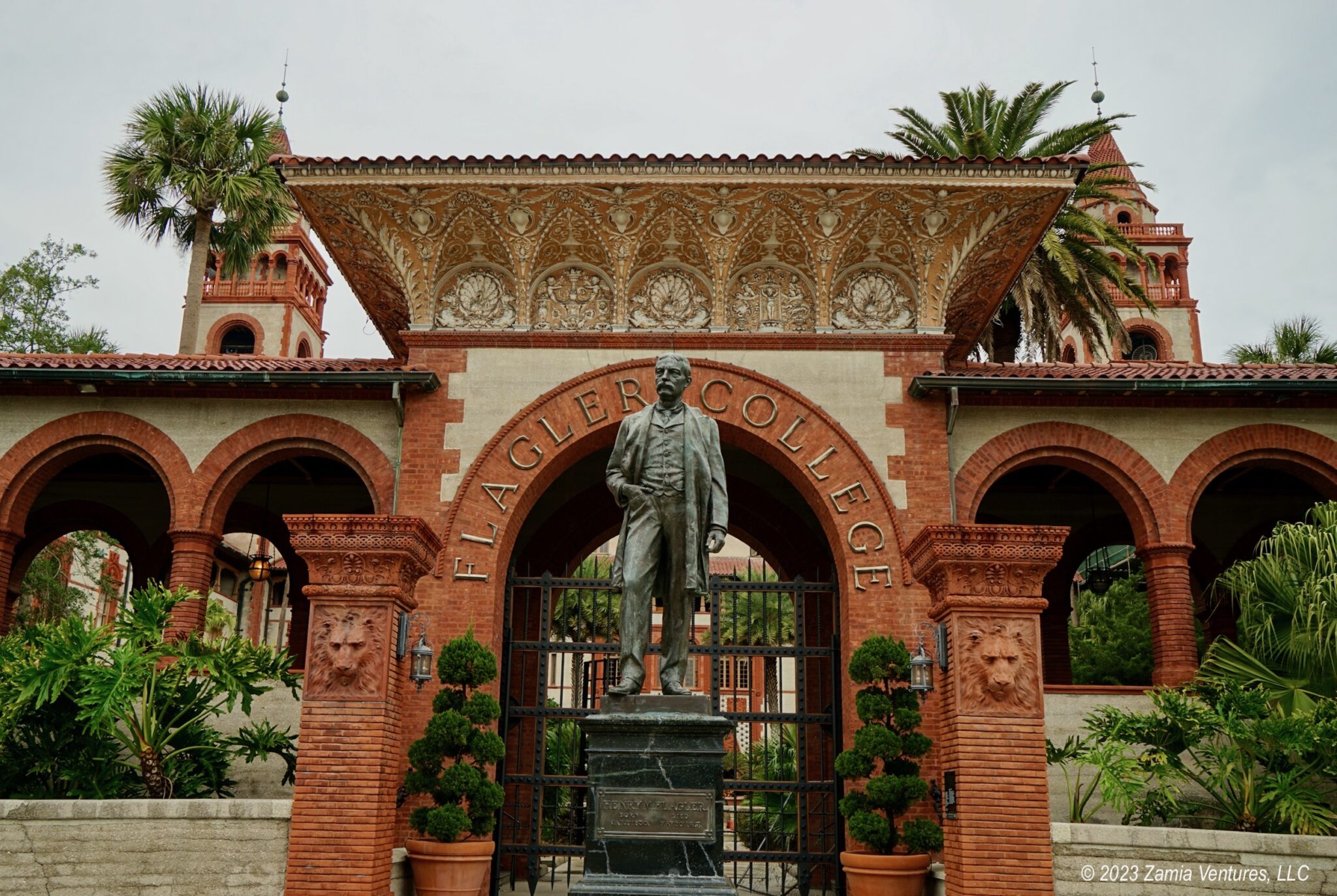
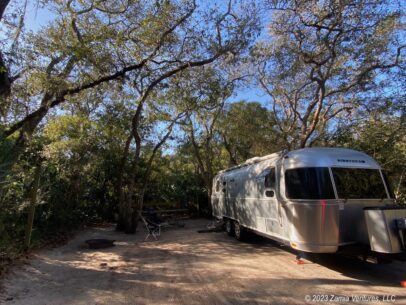
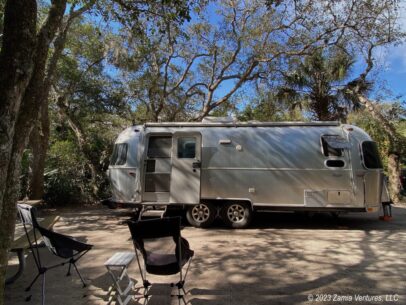
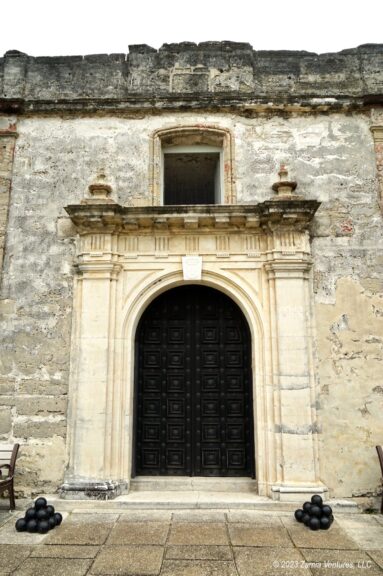
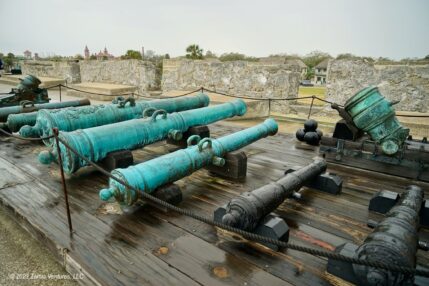
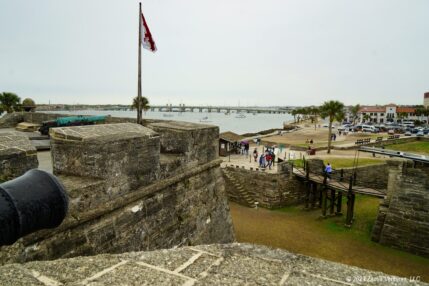
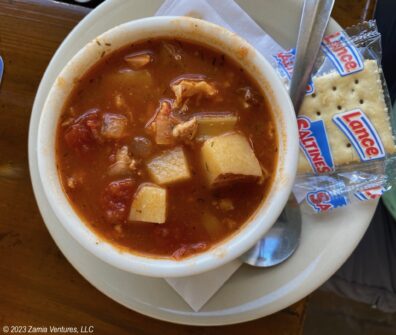
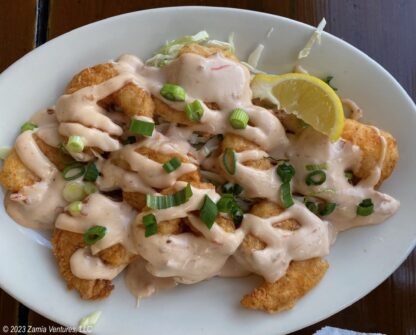
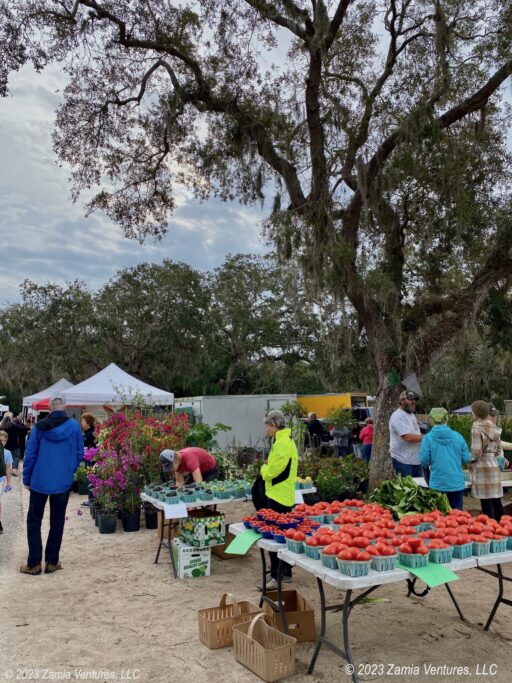
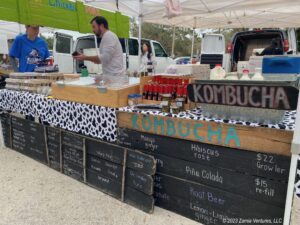
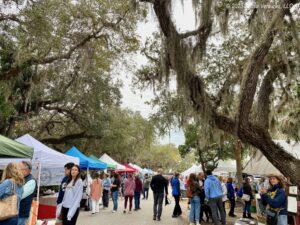
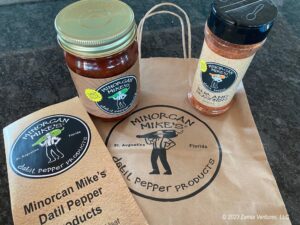
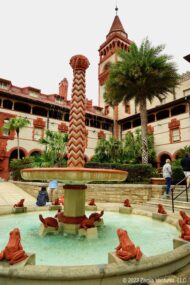
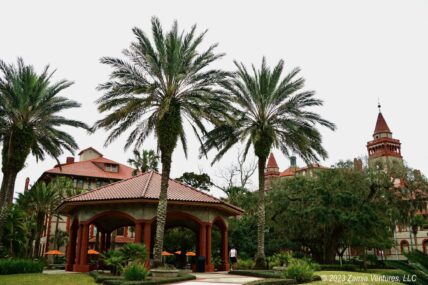
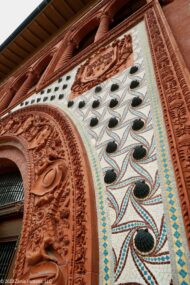
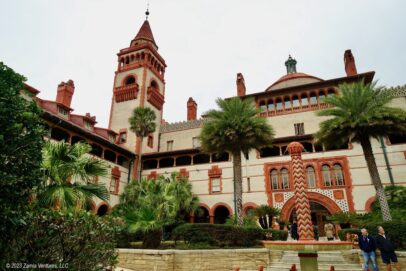

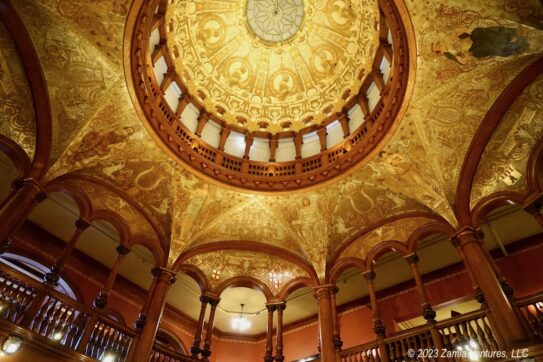
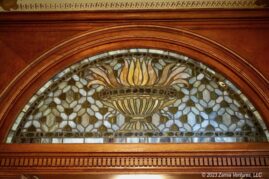
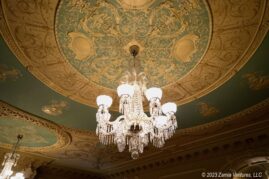
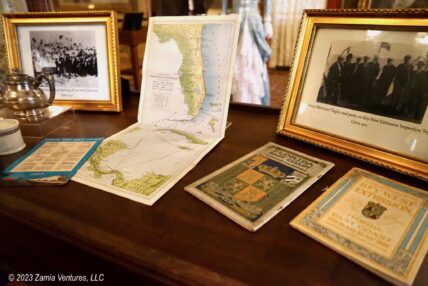
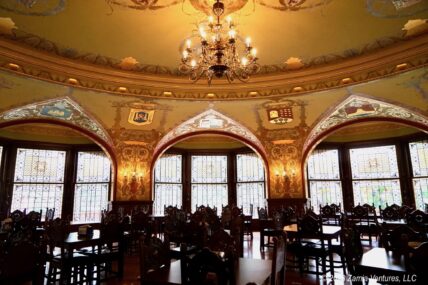
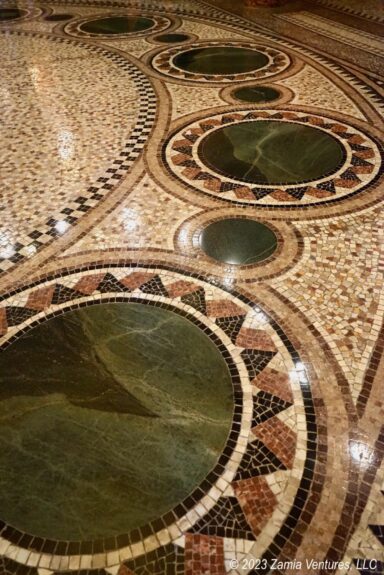
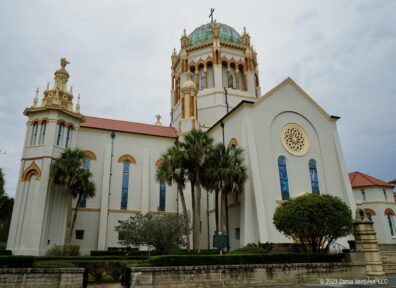
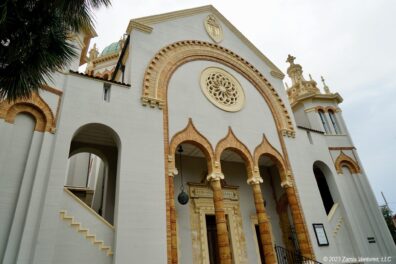
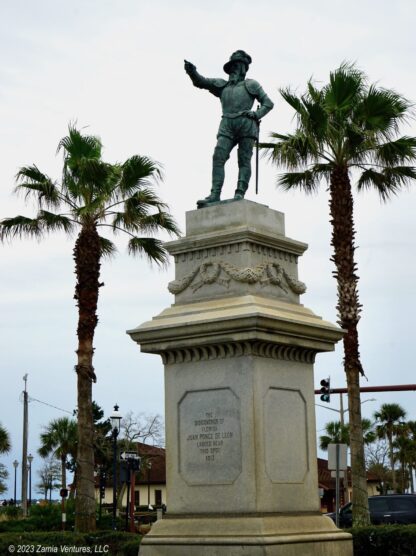
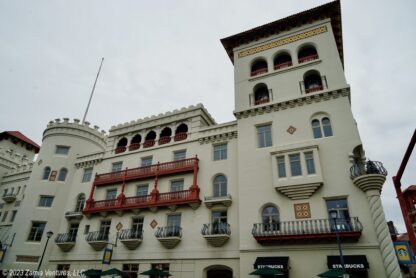
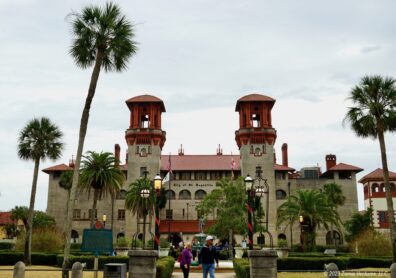
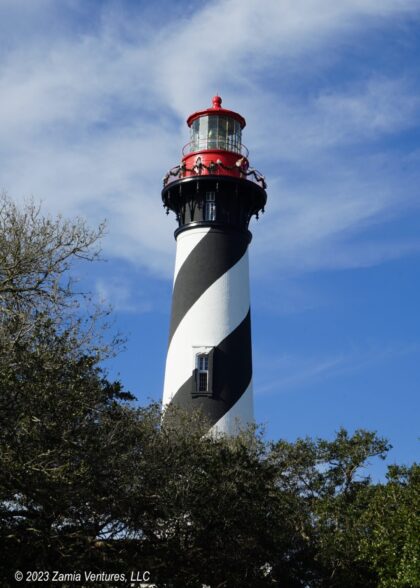
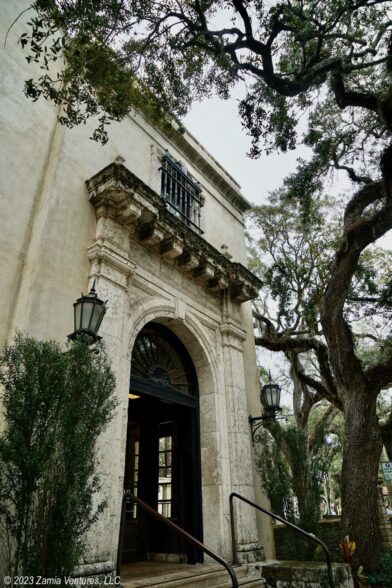
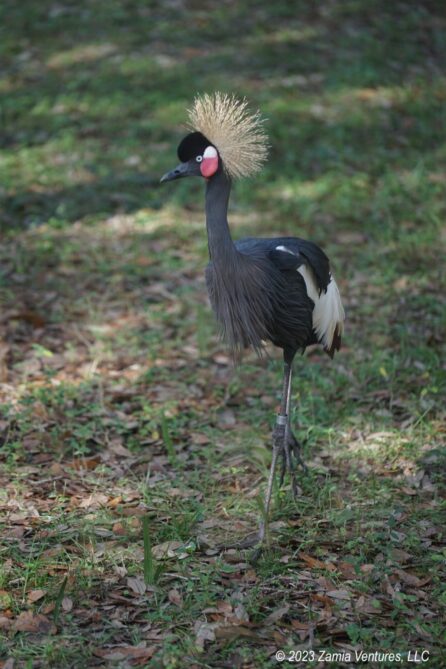
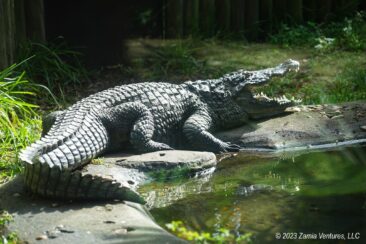
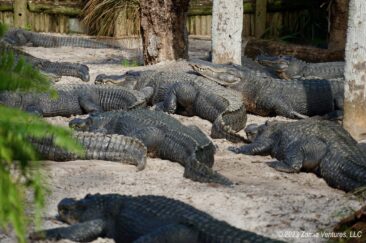
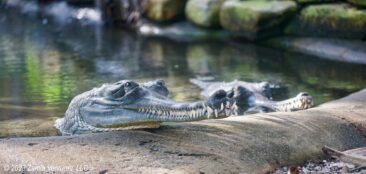
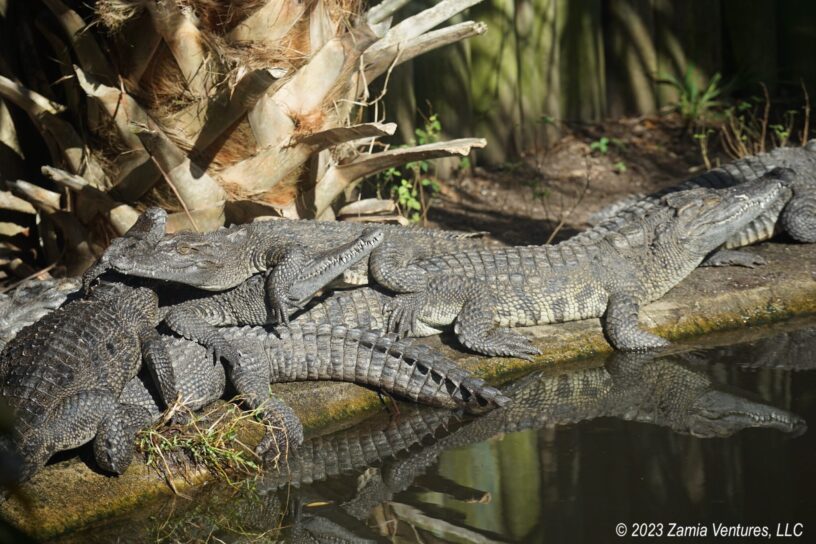
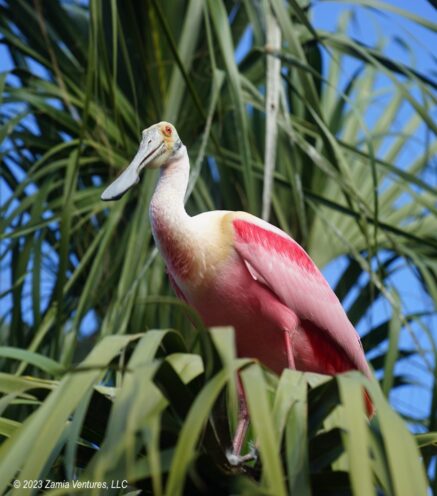
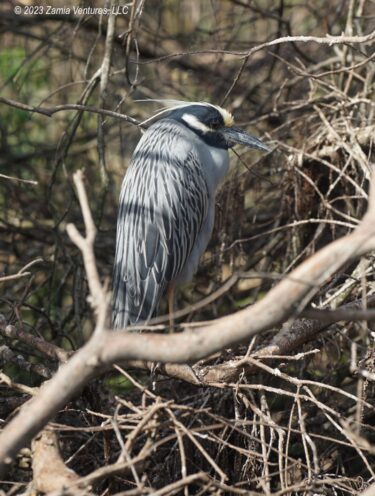
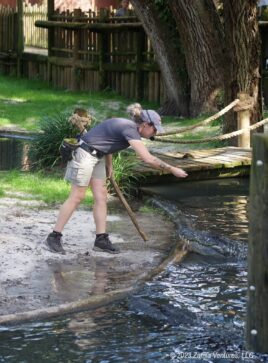
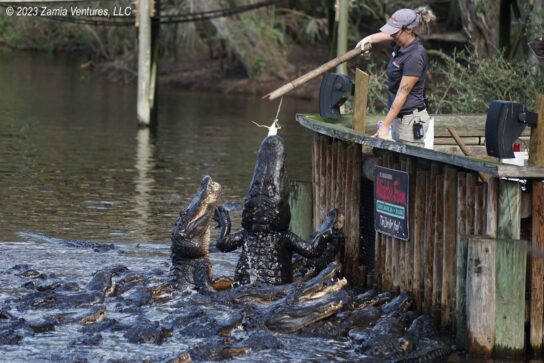
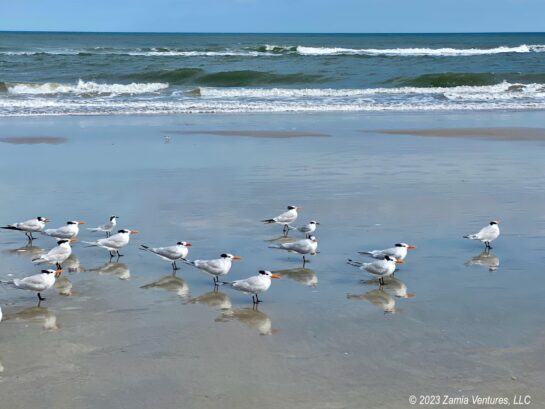
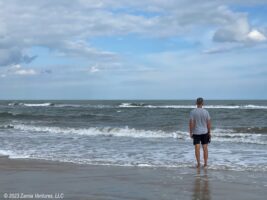
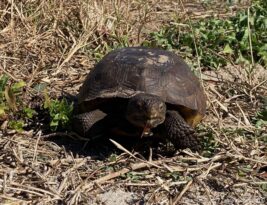
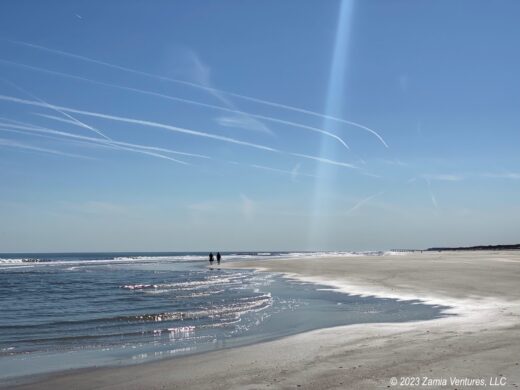
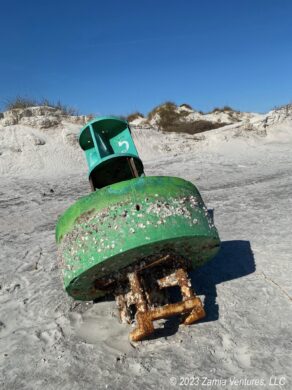
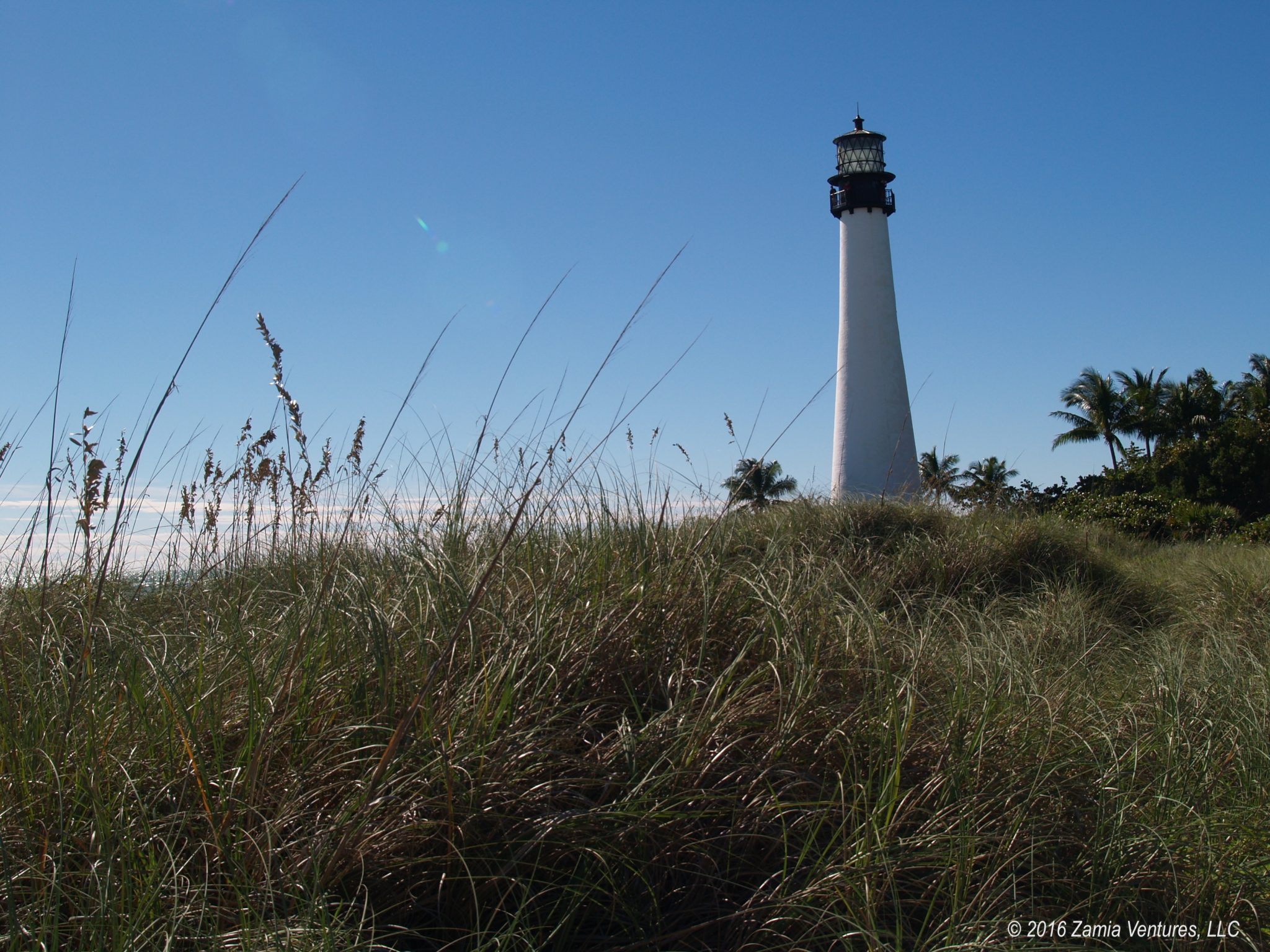
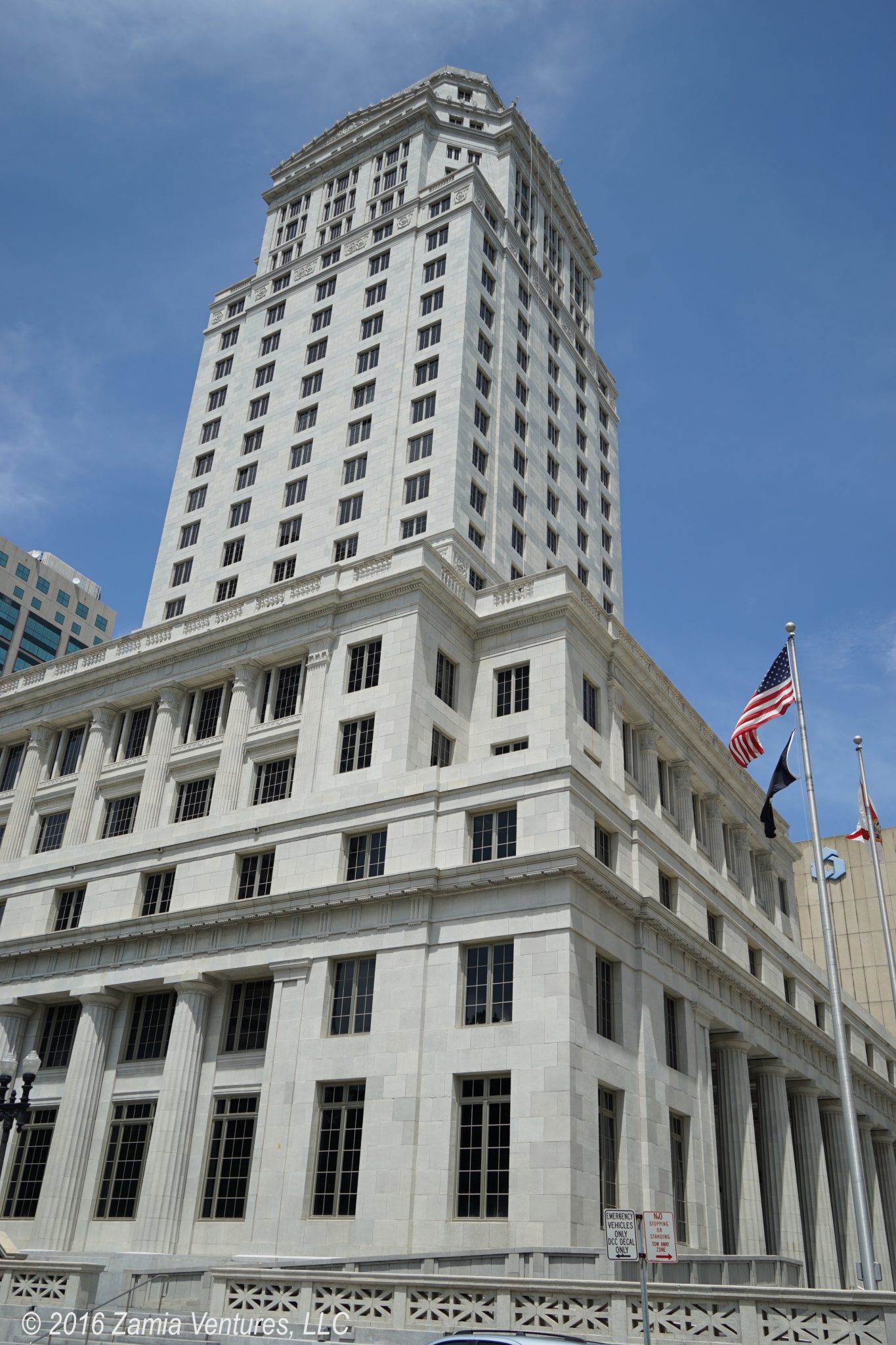
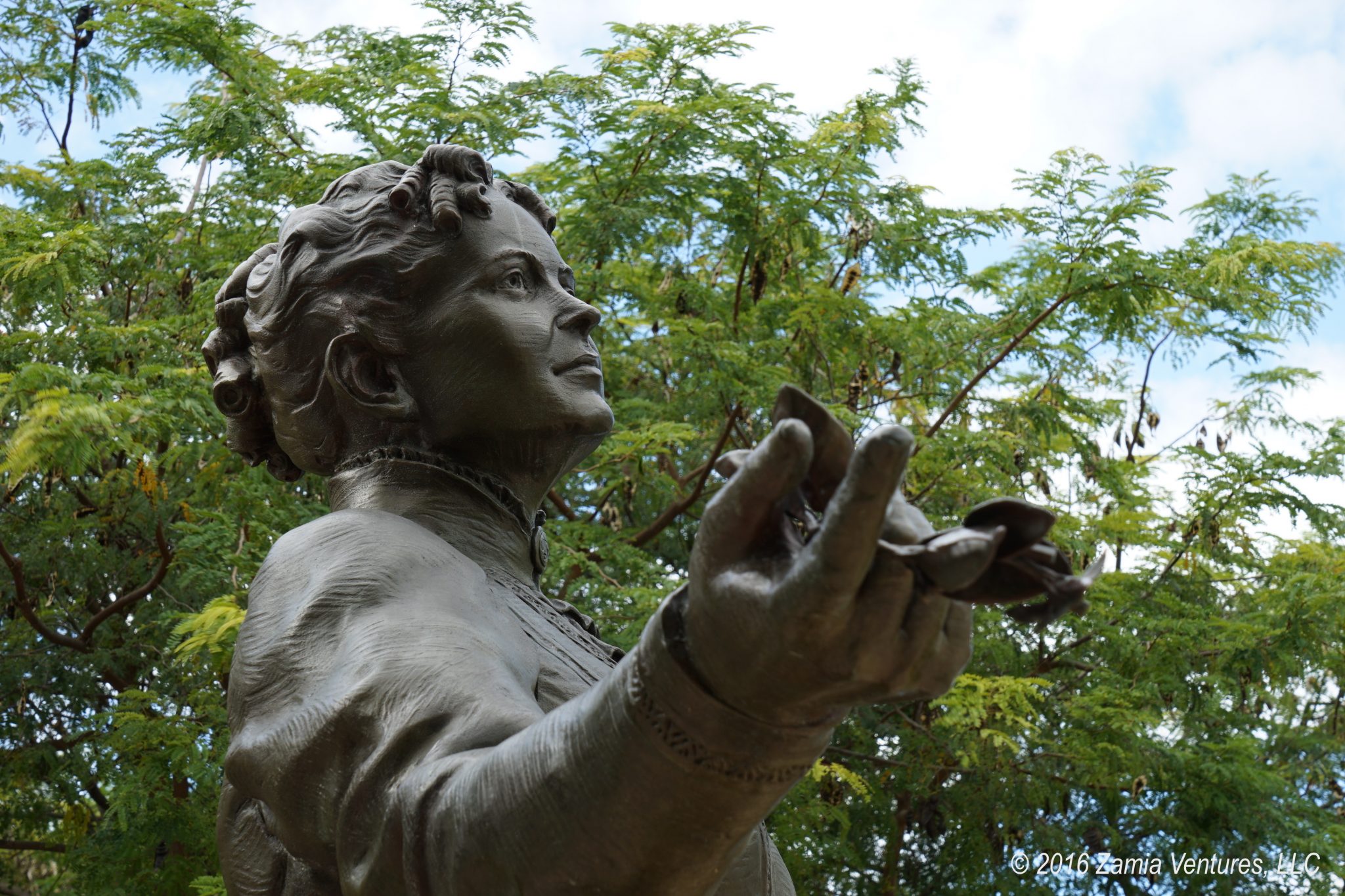
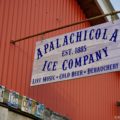
Yay! I’m glad you guys finally got to go, and I’m really glad you liked it so much. That’s where Kevin’s parents grew up and where they live now, along with most of his extended family, so we’ve spent loads of time there. Like you, we love that city. It’s got a nice combination of natural beauty, interesting history, and fun things to do. And it’s truly something else at Christmas when they light up the whole downtown with white lights. Just gorgeous.
As for those datil peppers, we LOVE them and use them for all kinds of cooking. There’s a company that will mail datil related products anywhere in the U.S., so if you’re in the mood for datil mayo, datil mustard, datil vinegar, datil hot sauce, or datil marinade, you can get it with the click of a button. And now I really want some of that datil goodness. Dammit!
We had visited before, but it had been 15 years and of course our last visit didn’t include the Airstream. The state park adds a whole extra dimension to the experience, with its lovely beaches, close walking distance to the amphitheater, and nice sites. It’s no wonder those sites are so hard to get! We really enjoyed our stay, although I think I would eventually get annoyed by the terrible traffic we encountered, especially any time the bridge was up. We also had the chance to enjoy the Christmas lights, because all the Christmas decorations were all still up! Near the end of January! Glad to know that I am not the world’s biggest procrastinator when it comes to packing away holiday decorations.
The datil peppers were a pleasant surprise – it was a little odd that they are apparently a Florida staple, but I was totally unaware of them. But then I read that they don’t travel well and are almost all grown in St. Johns County, so that made it even more imperative to try them while we were there. Yummy! I could see lots of uses for them, especially since we like spicy food. Looking forward to experimenting with the products we bought at the farmers’ market.
Oh, wouldn’t that be a beautiful place to have gone to college?! Or lived. Or stayed when it was a hotel. Congratulations on finally getting your chance to stay there. Looks like a pretty perfect weekend jaunt! Did you pick up any creepy new yard art? 🙂
The Ponce / Flagler College is stunning, but I wonder if the opulence and grandeur might be a little lost on the freshmen who live there. I know I didn’t appreciate the architecture and beauty of my college nearly enough as a student, but I see it much more clearly now! And we are very glad to have finally made the long-overdue visit to the area. It’s strange that we have traveled so much of the country, but still have places left in our home state that we have barely visited. I’m hoping to correct that over the next few years. And NO, we did not get any creepy yard art….
St. Augustine is one of our favorite places in Florida. It’s so beautiful architecturally, and the history is so rich and interesting. You guys really did it all! And you even got to see the holiday lights, which make the city even more magical.
I regret that I didn’t visit the alligator farm because I thought it would be too touristy. Eric went, and enjoyed it. Judging from his experience and yours, I clearly was wrong. Next time! I also regret that I’ve never had datil peppers. Also on my list! So glad you scored a site at Anastasia and had such a great time. Maybe we’ll try for next winter! (“Try” being the operative word here.)
I’m really glad we made the trip — St. Augustine was better than we remembered and I think all our traveling has made us into better, more informed visitors. So we’ve gotten better at picking out things that we will actually enjoy, which is key. There’s no question that the Alligator Farm is a tourist attraction, with a million ways to part you from your cash, but the actual animals are interesting and seem well cared for. Some areas like the rookery are actually open air, and there are real native species living there freely (obviously enticed by the food the visitors are doling out). So in that sense it feels a lot more genuine than the Pirate Museum.
If you can get a spot at Anastasia, it is well worth the effort. It is truly a lovely park, and while there are very limited trails we walked about 10 miles on the beach. The close proximity to town is fabulous and I am still thinking about that farmers’ market!